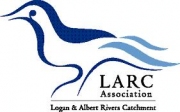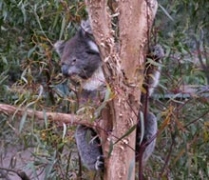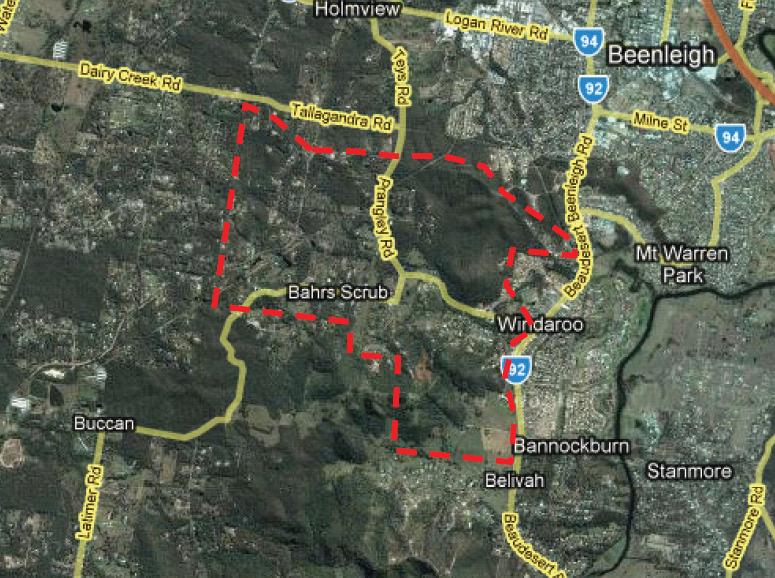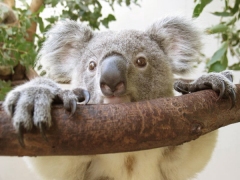
Logan and Albert Conservation Association

 ALBERT AND LOGAN NEWS, WEDNESDAY, NOVEMBER 4, 2009 page 13 article reads as follows
ALBERT AND LOGAN NEWS, WEDNESDAY, NOVEMBER 4, 2009 page 13 article reads as follows
Activists combine to ban houses [at Bahrs Scrub]FOUR conservation groups are joining forces to fight a 4000-lot housing development proposed for sensitive bushland at Bahrs Scrub.
Spokeswoman Petrina Maizey said the Logan City Council plan to allow 10,000 more people into a 510ha zone bordered by Wuraga and Sharton roads was
''irresponsible''.
She said the area housed endangered wildlife and flora and was unsuitable for development as it had serious soil and slope stability problems.
 Last call for volunteers as catchment crisis deepens
Last call for volunteers as catchment crisis deepens
In the wake of the 'fail' report cards for the Logan Estuary and the Southern Bay, the Logan-Albert Rivers Catchment Association (LARC) is also heading for a 'fail' if a new executive cannot be found at its forthcoming AGM. LARC is the peak organisation that speaks for and works to improve the health of the Logan-Albert catchment that drains into the failing Logan Estuary and Southern Bay.
Save Bahrs Scrub
Public Meeting Invitation
Do you want to lose unique bushland with koalas, platypus and rare plants to yet more urban development?
This is the proposed fate of Bahrs Scrub.
If your answer is NO!, Gecko, LACA, BREC and Wildlife Logan invite you to attend an important public meeting to be held at:
Windaroo Valley State High School
Beenleigh Beaudesert Rd, Windaroo
Thursday November 5, 2009 6:30 - 7:30 pm.
The four peak environment groups are determined, with your help, to protect for all time this important and unique area, and hope to establish the Save Bahrs Scrub community group. The Bahrs Scrub precinct, once proposed as a National Park, has been known for more than two decades to be a hotspot for a variety of wildlife, including koala and platypus, and rare vegetation, including newly discovered species.
Despite this knowledge, Bahrs Scrub has been fast-tracked by the SEQ Regional Plan as a Local Development Area within Logan City Council, projected to accommodate 11,000 residents.
Major conservation councils, Gecko - Gold Coast and Hinterland Environment Council, and BREC - Brisbane Region Environment Council, and peak groups, Logan & Albert Conservation Association and Wildlife Logan have come together to promote responsible outcomes for Bahrs Scrub which preserve the area's unique, extremely high conservation values and acknowledge multiple development constraints.
We need your support to Save Bahrs Scrub!
If you are interested and unable to attend this meeting please contact us at This email address is being protected from spambots. You need JavaScript enabled to view it.
Invitation to attend Save Bahrs Scrub public meeting
The Bahrs Scrub precinct has been known for more than two decades to be a biodiversity hotspot, containing threatened wildlife, including koala and platypus, and rare vegetation including newly discovered species.
Despite this knowledge, Bahrs Scrub has been fast-tracked by the SEQ Regional Plan as a Local Development Area within Logan City Council, projected to accommodate 11,000 residents.
Gold Coast & Hinterland Environment Council (Gecko) , Logan & Albert Conservation Association (LACA), Brisbane Region Environment Council (BREC) and Wildlife Logan invite you to attend this important public meeting.
Unique Bahrs Scrub conservation values and other development constraints will be discussed at a public meeting to be held at
Windaroo Valley State High School (Beenleigh Beaudesert Rd, Windaroo)
Thursday November 5, 2009
6:30 to 7:30 pm.
For further information, please contact This email address is being protected from spambots. You need JavaScript enabled to view it. or 3287 4377
Albert and Logan News 4 November 2009 cover the story of this development online in this article.... Activists combine to ban houses.
 IMPLEMENTATION OF NEW KOALA PLANNING INSTRUMENTS DEFERRED
IMPLEMENTATION OF NEW KOALA PLANNING INSTRUMENTS DEFERRED
Australian Koala Foundation said recently that Queensland government's new planning laws to protect dwindling koala numbers in the state's southeast are laughable. Although Climate Change and Sustainability Minister Kate Jones announced a raft of new measures to protect the marsupials' habitats - what is proposed is not enough. For years concerned citizens campaigning to raise awareness of the plight of the koala and protect them by protecting and preserving the essential habitat with an easy to remember slogan - NO TREE NO ME.
MAPPING has placed a triangle-shaped patch of zero-development koala protection area directly over that same patch developers have planned as the central heart of the town centre.
Further to a letter from the Director-General which was circulated to members (of UDIA Qld) on Wednesday, the Government has now deferred the implementation of koala planning controls to replace the interim controls until 28 February 2010 and they will not come into effect as at 1st January as previously proposed. Further opportunity for consultation on proposed changes and a draft State Planning Policy is being provided. The UDIA (Qld) is engaging with the Government and a forum will be held in the new year to discuss practical implementation issues associated with the draft instruments.
Gold Coast Bulletin, Friday 11 December 2009, page 3 "States koala chaos on map"
 As Logan City Council explained on their website the South East Queensland Regional Plan 2009-2031 has identified the Bahrs Scrub locality as a Local Development Area. Council residents and land owners had an opportunity to input into the SEQRP and the area of Bahrs Schub has been selected by state government and targeted or 'identified' as an area to be developed for urban purposes and in doing so help Council achieve the dwelling targets allocated to it in the regional plan. It is not council that set those targets - but state government which is heading down the path towards bigger population targets for SEQ - and Logan City Council is very supportive of the state's targets.
As Logan City Council explained on their website the South East Queensland Regional Plan 2009-2031 has identified the Bahrs Scrub locality as a Local Development Area. Council residents and land owners had an opportunity to input into the SEQRP and the area of Bahrs Schub has been selected by state government and targeted or 'identified' as an area to be developed for urban purposes and in doing so help Council achieve the dwelling targets allocated to it in the regional plan. It is not council that set those targets - but state government which is heading down the path towards bigger population targets for SEQ - and Logan City Council is very supportive of the state's targets.
Council must now prepare a more detailed Local Development Area Plan for this locality. This plan will identify those areas suitable for urban purposes and those areas required to be conserved or managed for a variety of purposes.
The plan will also identify the range of necessary infrastructure needed to support development of this locality.
Council has now commenced this plan making process. The final plan and its statutory components will then need to be integrated into Council's planning scheme.
Council is currently in the initial scoping stage. This stage is intended to identify the range of issues that need to be addressed during the plan making process. As part of this process Council is consulting with a range of stakeholders, including State Government Agencies and landowners as to what they see as the significant issues for developing this locality. These issues will then be feed into consultancies briefs for further studies to be undertaken. The outputs of these studies will then be used to formulate a range of land use options that can then be further tested and refined.
The big questions to be asked here are - what are the benchmarks for sustainable development?
 The Save Our Koalas rally held in Brisbane City on Friday 25th September 2009, Save the Koala Day was a great turnout! Many said there were over 1000 people on the streets. Fantastic! We were inspired by the effort made by everyone on the day and just how many passionate people there were willing to let our Governments know that we've had enough and want our Koalas protected. That message was tabled in Parliament on Thursday 8th October 2009 by Mr. Glen Elmes, state Shadow Minister for the Environment. As usual there is silence from our politicians at both the State and Federal levels.
The Save Our Koalas rally held in Brisbane City on Friday 25th September 2009, Save the Koala Day was a great turnout! Many said there were over 1000 people on the streets. Fantastic! We were inspired by the effort made by everyone on the day and just how many passionate people there were willing to let our Governments know that we've had enough and want our Koalas protected. That message was tabled in Parliament on Thursday 8th October 2009 by Mr. Glen Elmes, state Shadow Minister for the Environment. As usual there is silence from our politicians at both the State and Federal levels.
It is now up to us collectively to keep the pressure on our Governments to act and act now!
On 10 November 2009, scientists from around Australia will meet to decide on the Australian Koala Foundation's nomination of the koala as ‘vulnerable' under the EPBC Act, Australia's threatened species legislation. If the Koala is protected then it will mean that all developments in koala habitat will have federal oversight, something that hasn't happened since white settlement 200 years ago.
So what can you do?
 Our Koalas Need You! On 10 November 2009, scientists from around Australia will meet to decide on the Australian Koala Foundation's nomination of the koala as ‘vulnerable' under the EPBC Act, Australia's threatened species legislation. If the Koala is protected then it will mean that all developments in koala habitat will have federal oversight, something that hasn't happened since white settlement 200 years ago. So what can you do? We ask that you write to: |
|
Andy Grodecki invites us all to join with him to participate in an international event hosted at www.350.org. This s a new global campaign focused on making sure the world takes the  kind of big, bold, fast action that we need to solve this crisis.
kind of big, bold, fast action that we need to solve this crisis.
Our action will be at Jubilee Park, Beaudesert -
12 noon this Sunday 25 October during the 'Our habitat, our home' event
Hope you can make it.
Here's the situation:
- The science of climate change is getting darker by the day. The Arctic is melting away with astonishing speed, decades ahead of schedule. Everything on the planet seems to be melting or burning, rising or parched. No surprise there--scientists tell us that the safe level of carbon dioxide in the atmosphere is 350 parts per million, and we're at 389 and rising.
- But there's good news: we're not cooked yet, and THIS YEAR we have an opportunity to make a real impact. In December, the nations of the world will be meeting to craft a global treaty designed to help the world act together to solve global warming. The terms of this treaty may well determine whether we actually save the planet from climate change, so it's up to all of us to make sure we get it right.
350 Species are Threatened by Global Warming
 Saturday 24 October 2009 is the International Day of Climate Action. The Center for Biological Diversity launched a massive new interactive Web site today providing accounts of 350 plants and animals threatened by global warming. Climate change bills require deeper, faster cuts in greenhouse gas emissions, or we won't succeed in reducing atmospheric carbon dioxide to 350 parts per million, dooming these 350 species and many, many more to extinction.
Saturday 24 October 2009 is the International Day of Climate Action. The Center for Biological Diversity launched a massive new interactive Web site today providing accounts of 350 plants and animals threatened by global warming. Climate change bills require deeper, faster cuts in greenhouse gas emissions, or we won't succeed in reducing atmospheric carbon dioxide to 350 parts per million, dooming these 350 species and many, many more to extinction.
Check out the website here . Of particular concern are the two turtles which inhabit the Pacific Ocean - Loggerhead sea turtles and the critically endangered hawksbill sea turtle.